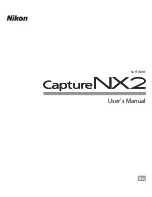
Private Key
The private key must be kept safely by the key owner. Accidental publication of
the private key compromises the key pair and renders it useless.
Public Key
The key owner circulates the public key for use by third parties.
17.1.1 Key Authenticity
Because the public key process is in widespread use, there are many public keys in
circulation. Successful use of this system requires that every user be sure that a public
key actually belongs to the assumed owner. The assignment of users to public keys is
confirmed by trustworthy organizations with public key certificates. Such certificates
contain the name of the key owner, the corresponding public key, and the electronic
signature of the person issuing the certificate.
Trustworthy organizations that issue and sign public key certificates are usually part
of a certification infrastructure that is also responsible for the other aspects of certificate
management, such as publication, withdrawal, and renewal of certificates. An infras-
tructure of this kind is generally referred to as a public key infrastructure or PKI. One
familiar PKI is the OpenPGP standard in which users publish their certificates them-
selves without central authorization points. These certificates become trustworthy when
signed by other parties in the “web of trust.”
The X.509 Public Key Infrastructure (PKIX) is an alternative model defined by the
IETF (Internet Engineering Task Force) that serves as a model for almost all publicly-
used PKIs today. In this model, authentication is made by certificate authorities (CA)
in a hierarchical tree structure. The root of the tree is the root CA, which certifies all
sub-CAs. The lowest level of sub-CAs issue user certificates. The user certificates are
trustworthy by certification that can be traced to the root CA.
The security of such a PKI depends on the trustworthiness of the CA certificates. To
make certification practices clear to PKI customers, the PKI operator defines a certifi-
cation practice statement (CPS) that defines the procedures for certificate management.
This should ensure that the PKI only issues trustworthy certificates.
198
Security Guide
Summary of Contents for LINUX ENTERPRISE DESKTOP 11
Page 1: ...SUSE Linux Enterprise Server www novell com 11 March 17 2009 Security Guide...
Page 9: ...32 7 Managing Audit Event Records Using Keys 433 33 Useful Resources 435...
Page 10: ......
Page 29: ...Part I Authentication...
Page 30: ......
Page 55: ...Figure 4 2 YaST LDAP Server Configuration LDAP A Directory Service 41...
Page 126: ......
Page 127: ...Part II Local Security...
Page 128: ......
Page 158: ......
Page 173: ...Part III Network Security...
Page 174: ......
Page 194: ......
Page 197: ...Figure 16 2 Scenario 2 Figure 16 3 Scenario 3 Configuring VPN Server 183...
Page 210: ......
Page 228: ......
Page 229: ...Part IV Confining Privileges with Novell AppArmor...
Page 230: ......
Page 274: ......
Page 300: ......
Page 328: ......
Page 340: ......
Page 342: ......
Page 386: ......
Page 387: ...Part V The Linux Audit Framework...
Page 388: ......
















































